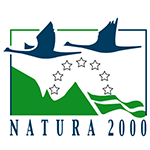Agnatha
Also known as jawless fish, agnathans have eel-like bodies and are distinguished from fish for the absence of jaws and mandibles.
Also known as jawless fish, agnathans have eel-like bodies and are distinguished from fish for the absence of jaws and mandibles.
Class of animals that can live on land or in water. An example of amphibian is the frog.
A slender, whiskerlike sensory organ near the mouth of certain type of fish. An example of fish with barbels is the Black bullhead.
The coexistence of different animal and plants species within the same ecosystem, the mutual interactions of those species creates a balanced environment.
Colors and patterns of an animal’s skin, fur or plumage.
The term means “tending to fall off”, in reference to trees and shrubs that seasonally shed leaves.
Recently hatched fish that has passed the larval stage.
The largest family of bony fish
Plant that lives and develops along waterways and lakes.
A species is indigenous if it originated and evolved in the region or ecosystem it lives in.
Commonly known as the mint family, Labiatae are a family of flowering aromatic plants common in the Mediterranean region. This family includes, for example, the lavender.
A local set of atmospheric conditions that differ from those in the surrounding areas.
Family of small carnivore animals related to otters and stoats, with elongated bodies, short legs, short, round ears, and thick fur. Although most mustelids are nocturnal animals, they can occasionally be spotted also during the day.
Animal that has the ability to eat and survive on both plant and animal matter.
Plant that lives more than two years, the term is often used to differentiate a plant from shorter-lived annuals and biennials.
A pruning system involving the removal of the upper branches of a tree, which promotes the growth of a dense head of foliage and branches.
Group of all modern reptiles that includes lizards, green lizards, geckos, iguanas, slowworms, common skinks and three-toed skinks, ranging from a few centimeters to three meters in length.
A spring well (“fontanile”) is the result of the human intervention on resurgences, transformed into spring wells by the enlargement of the natural valleys in the land.
The springhead (“capofonte”) is a portion of land where the outflow of resurgence spring water has been facilitated by excavations.
The physical confine of a stream or river.
Family of flowering plants common in temperate areas throughout the world. The defining characteristic of this family is the inflorescence, the umbel, with flowers aggregated in terminal umbels that may be simple or compound.


